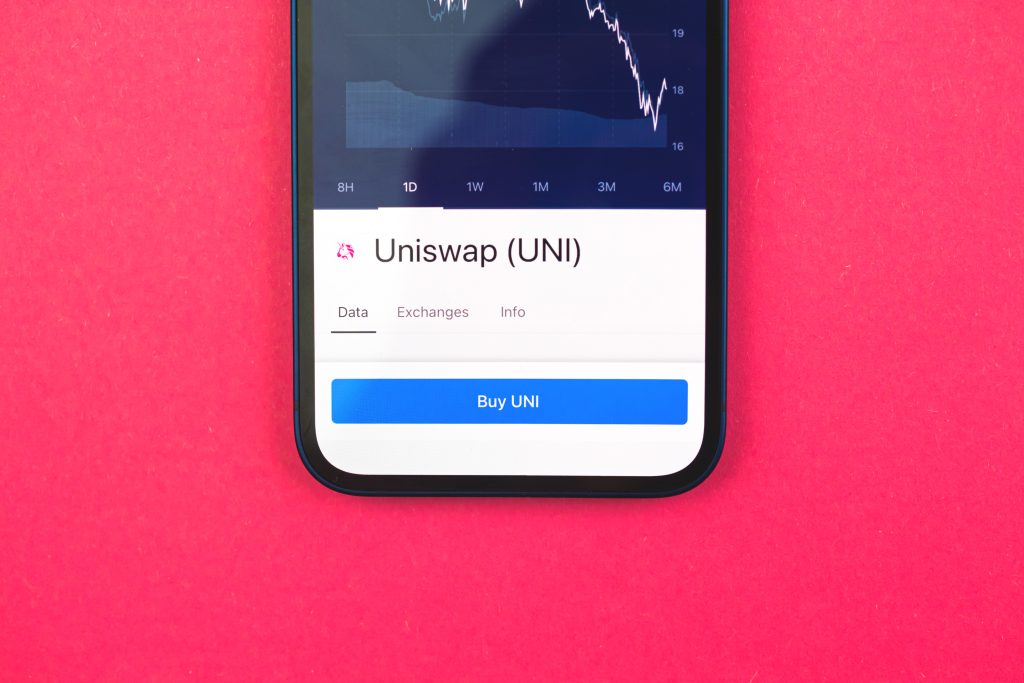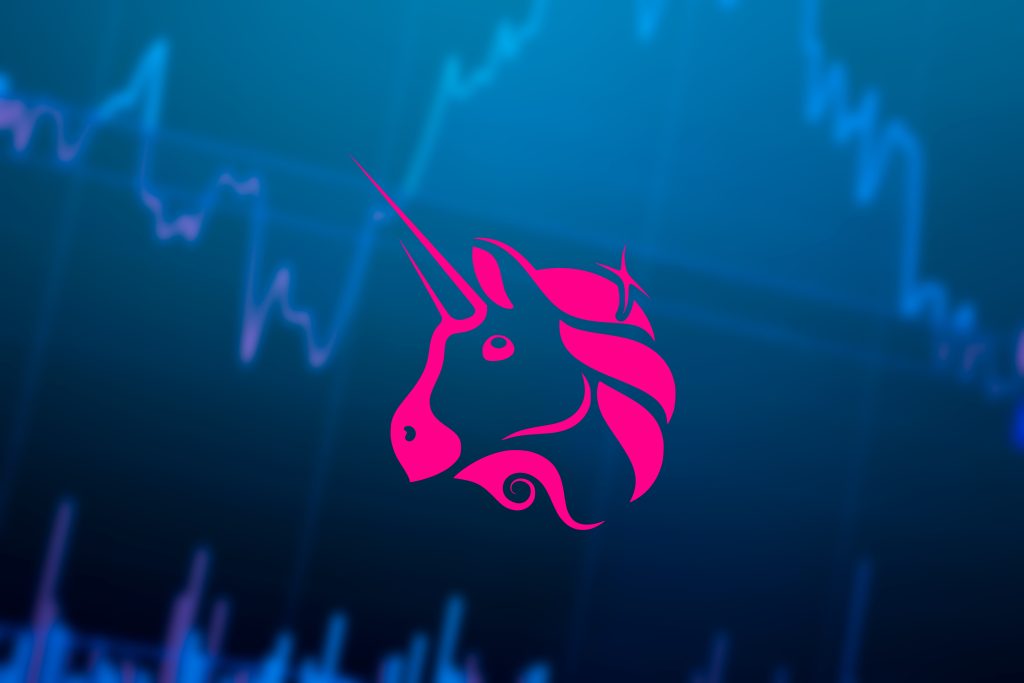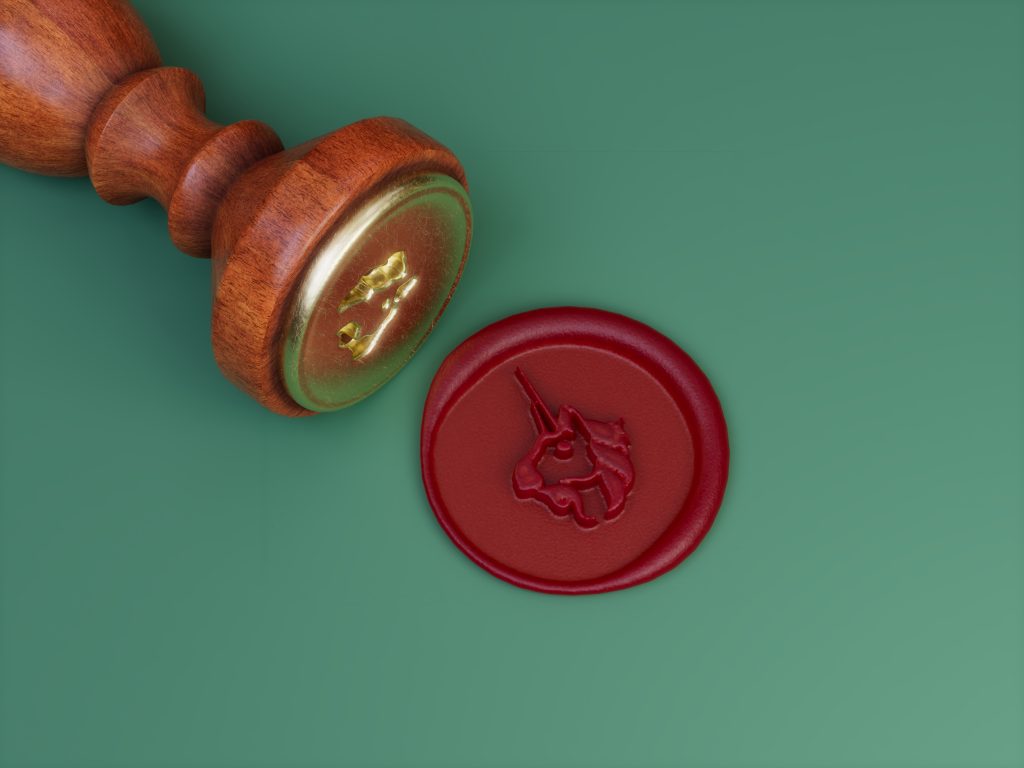Uniswap, a trailblazer in the world of decentralized finance (DeFi), has revolutionized the way we perceive and interact with cryptocurrency exchanges. As a decentralized exchange (DEX) built on the Ethereum blockchain, Uniswap has carved out a significant position within the DeFi landscape. This article aims to delve into the intricacies of Uniswap, its unique tokenomics, and the purpose of its native token, UNI.
What is Uniswap?


Uniswap is a protocol built on the Ethereum blockchain that allows for the decentralized exchange of cryptocurrencies and non-fungible tokens (NFTs). It is the first and most used DEX on Ethereum, with a total value locked (TVL) exceeding $5.18 billion. Uniswap’s prominence is not only due to its pioneering status but also its role as a decentralized autonomous organization (DAO).
Uniswap operates on a peer-to-peer system, eliminating the need for intermediaries. It utilizes smart contracts that run on the Ethereum blockchain and other networks like Polygon, Optimism, Arbitrum, Celo, BNB Chain, and Polkadot via the Moonbeam Network parachain. This ensures that every transaction is secure, transparent, and immutable.
Unlike traditional centralized exchanges, Uniswap doesn’t rely on an order book to match buyers and sellers. Instead, it uses an automated market maker (AMM) system. The AMM is a smart contract that holds a pool of assets, enabling users to trade without the need for a third party.
Since its inception, Uniswap has undergone multiple iterations, each introducing new features and improvements. The latest version, Uniswap v3, introduced concentrated liquidity, multiple fee tiers, and non-fungible liquidity, among other features.
Understanding the UNI Token


The UNI token is the native token of the Uniswap protocol. Introduced in September 2020 with Uniswap v2, the UNI token serves a dual purpose: it decentralizes the governance of the protocol and incentivizes user participation.
UNI token holders can vote on or submit proposals, thereby participating in the protocol’s governance. This democratization of decision-making power is a key aspect of Uniswap’s ethos as a DAO. Furthermore, UNI token holders receive discounts on trading fees, with the discount rate proportional to the amount of UNI held.
In addition to governance and fee discounts, UNI tokens can be staked to earn yield in other popular protocols such as Compound. This introduces an element of passive income generation, further incentivizing participation in the Uniswap ecosystem.
Furthermore, the tokenomics of UNI are designed to encourage active participation and investment in the Uniswap protocol. By rewarding users for their involvement and providing a say in the protocol’s governance, UNI serves as a powerful tool for fostering a robust and engaged community.
How to Get Started with Uniswap
Uniswap is a decentralized exchange protocol built on the Ethereum blockchain. It allows for the trading of ERC-20 tokens directly from your wallet, without the need for an intermediary. This is made possible through the use of smart contracts and liquidity pools, which ensure that there is always a counterparty for your trades.
Here’s a step-by-step guide on how to get started with Uniswap:
- Set Up a Web3 Wallet: The first step is to set up a Web3 wallet, such as MetaMask. This will be used to store your crypto and interact with the Uniswap protocol.
- Connect Your Wallet to Uniswap: Once your wallet is set up, go to the Uniswap website and click on the “Connect Wallet” button. This will link your wallet to the Uniswap protocol, allowing you to start trading or adding assets to a liquidity pool.
- Choose Your Version: Uniswap has multiple versions (v1, v2, and v3), each offering different features. The process of using each version is pretty much the same, but v2 and v3 offer more features than the original version, making them the most popular choices.
- Start Trading or Providing Liquidity: After connecting your wallet and choosing your version, you can start trading on the platform or adding assets to a liquidity pool. Trading involves swapping one token for another, while providing liquidity involves depositing tokens into a pool to facilitate trades for others.
Remember, all DeFi dapps are experimental and come with risks. Never lock up more value than you’re prepared to lose if something should go wrong.
How to Swap Tokens on Uniswap
Swapping tokens on Uniswap is a straightforward process. Here’s how you can do it:
- Connect Your Wallet: Connect your Web3 wallet to Uniswap.
- Select Tokens: On the Uniswap interface, select the token you wish to swap from and the token you wish to swap to.
- Enter Amount: Enter the amount of the token you wish to swap.
- Review Transaction: Review the details of the transaction, including the exchange rate and the amount of the token you will receive. Also, pay attention to the slippage tolerance. Slippage refers to the difference between the expected price of a trade and the actual price at which is executed. High volatility can increase slippage.
- Confirm Swap: If you’re happy with the details, confirm the swap. The tokens will be swapped and the new tokens will appear in your wallet.
Remember, due to the nature of decentralized exchanges, there may be a price impact or slippage when executing large trades. Always double-check the details before confirming a swap.
Providing Liquidity on Uniswap


Uniswap’s protocol is designed to facilitate the provision of liquidity by users. This process is essential for the functioning of the platform, as it ensures that there are always enough assets in the liquidity pool for trading. Liquidity providers (LPs) are incentivized to contribute to these pools by earning transaction fees from trades that occur within their pool.
Here’s a step-by-step guide on how to provide liquidity on Uniswap:
- Visit the Uniswap website.
- Connect your Web3 wallet using the top right button.
- Click “Pool” at the top of your screen.
- Click the highlighted “Add Liquidity” button.
- Select the two token inputs you want to provide, i.e., ETH and MKR, or DAI and SAND.
- Indicate how much you want to provide. The value of one input is always equal to the value of the second input. For instance, if you provide $100 in ETH, you also need to provide $100 in MKR.
- Click “Supply.” You will need to pay a confirmation fee to allow Uniswap to tap into your tokens. This is a one-time fee.
- Supplying tokens requires two transactions, and these come with a certain transaction fee.
Remember, all DeFi dapps are experimental and come with risks. Never lock up more value than you’re prepared to lose if something should go wrong.
Buying NFTs on Uniswap
Since late 2022, Uniswap expanded its services to include the trading of non-fungible tokens (NFTs). The Uniswap NFT marketplace aggregator allows traders to get more listings at the best prices from major marketplaces across Web3. This makes buying for the best price much easier than manually comparing in different places.
Here’s a simple guide on how to purchase NFTs on Uniswap:
- Visit the Uniswap dapp.
- Connect your wallet.
- Access the NFT Marketplace Aggregator page.
- Explore and choose the Ethereum NFT collection you want.
- Filter, range, and select the NFTs.
- Complete the purchase of NFTs in your bag.
Remember, as with any other decentralized cryptocurrency project, you are responsible for your own safety and funds. Therefore, you shouldn’t trade with more than you can afford to lose, and always store your tokens in a secure wallet.
Is Uniswap Safe?


Uniswap, as a decentralized exchange, is fundamentally safe due to the inherent security of blockchain technology. It operates on the Ethereum network, which is renowned for its robustness and security. Uniswap’s smart contracts have been audited and tested extensively, ensuring the safety of transactions on the platform.
However, it’s crucial to note that while the platform itself is secure, the safety of your assets is directly in your hands. Your funds aren’t actually stored on the exchange at all. You keep possession of them in your wallet. Therefore, it’s essential to exercise caution and ensure the security of your wallet.
While Uniswap has never been hacked, the DeFi space is still young and evolving, and there are always risks involved, especially given the number of crypto hacks. Therefore, users should exercise caution and be aware of potential scams that maliciously use Uniswap’s name to defraud victims. In 2022, for example, there was a phishing scam that took nearly $8 million in assets from people who thought they were competing for UNI airdrops.
Alternatives to Uniswap
While Uniswap has been a pioneer in the DeFi space, several other platforms have emerged as viable alternatives. These include:
- 1inch: A decentralized exchange aggregator that routes trades through multiple DEXes to get the best possible trading price.
- SushiSwap: A decentralized exchange that was initially a fork of Uniswap but has since introduced additional features.
- PancakeSwap: A DEX built on BSC, offering lower fees and faster transactions due to the efficiency of the BSC.
- Balancer: An automated portfolio manager and liquidity provider that allows users to create liquidity pools with up to eight tokens.
- KyberSwap: A decentralized liquidity protocol that allows users to trade tokens directly from their wallets.
Each of these platforms offers unique features and advantages, and the choice between them depends on individual user preferences and requirements.
The Bottom Line
Uniswap has undeniably made a significant impact on the DeFi landscape. Its innovative approach to decentralized exchange, combined with its unique tokenomics and community-focused governance, has set a new standard in the industry.
While there are alternatives available, Uniswap’s commitment to security, transparency, and user empowerment continues to make it a leading choice for many in the crypto community. Whether you’re a seasoned trader or a newcomer to the world of DeFi, Uniswap offers a comprehensive and user-friendly platform for trading and liquidity provision.









